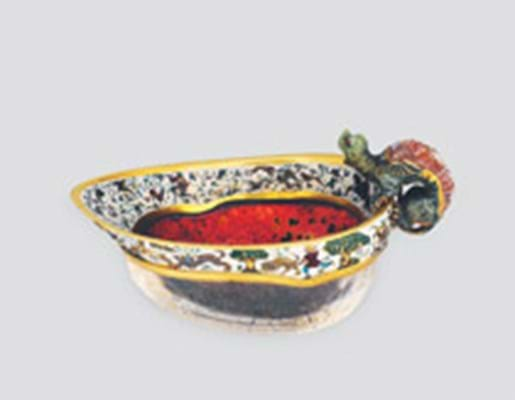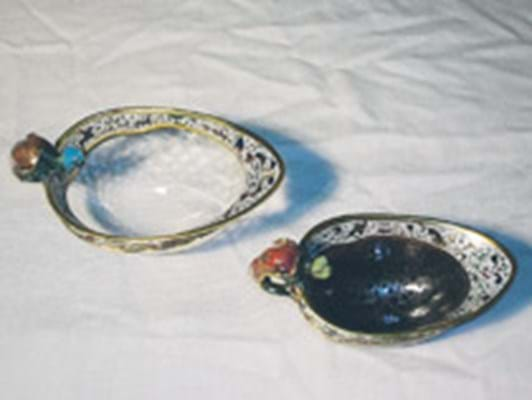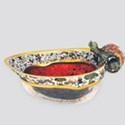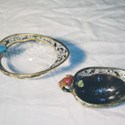That is how Anthony Phillips, Christie's international director of silver, came across the Renaissance treasure pictured here.
An email enquiry sent by a Portuguese client about a piece that had languished unrecognised in a display cabinet alongside some Chinese export porcelain revealed images of something that had all the appearance of a kunstkammer treasure.
"When I first saw the images I was absolutely stunned. I spent 15 minutes staring at the screen in disbelief. It was clear that I was looking at what was almost certainly an unrecorded early 17th century masterpiece," he recalls.
When Mr Phillips finally saw the cup in the flesh he was not disappointed. Constructed from gold, glass, rock crystal and enamel, this was top-quality workmanship, a Renaissance gem of the highest quality.
And there was more. As Anthony Phillips started researching the piece looking for stylistic comparisons, his attention was drawn by Dr Rudolph Distelberger, the leading expert in this field, to a very similar example that had been in the Schatzkammer of the Residenz Museum in Munich since at least 1730. Indeed, while there are some individual distinctions between them, the two cups are sufficiently similar in overall conception for Mr Phillips to be convinced that both were produced by the same workshop, probably as part of the same commission.
Both the Munich cup and Christie's version, which has been in the possession of the wealthy businessman Alfredo Baptista Cunha Braga of Lisbon and his descendants since c. 1920, are composed of the same materials. Both have borders enamelled with hunting scenes set amongst scrolling ornament on a white ground and handles formed as dragon-like creatures. Their bodies are composed of rough glass set over powdered amber with enamelled heads: green for the Lisbon version, blue for the Munich cup. Both also have rock crystal bases.
Christie's cup is more complex in construction: double walled with a quartz exterior and polished glass interior and a translucent enamel or amber layer sandwiched between the two. The Munich version has only a clear-faceted quartz base.
The precise origin of their manufacture has yet to be established but Southern Germany is one possibility. Christie's also proffered the tempting speculation that the cups could have been made for Rudolph II's legendary kunstkammer in Prague.
The cup was offered in Christie's silver sale on November 30.
The estimate was set at £200,000-300,000, an attractive level many observers felt sure would be dramatically exceeded. Sure enough, bidding opened at £320,000 and rapidly rose to double that level, first with competition between the room and phone and then between two telephone bidders. The hammer finally fell at £1.75m to Anthony Phillips' telephone. Bidding at the other end were London dealers S.J. Phillips.
By Anne Crane
A Renaissance e-discovery
The 21st century equivalent of an unknown masterpiece brought in to the front counter of a saleroom must be the treasure that surfaces on an auctioneer’s computer via a routine email.








